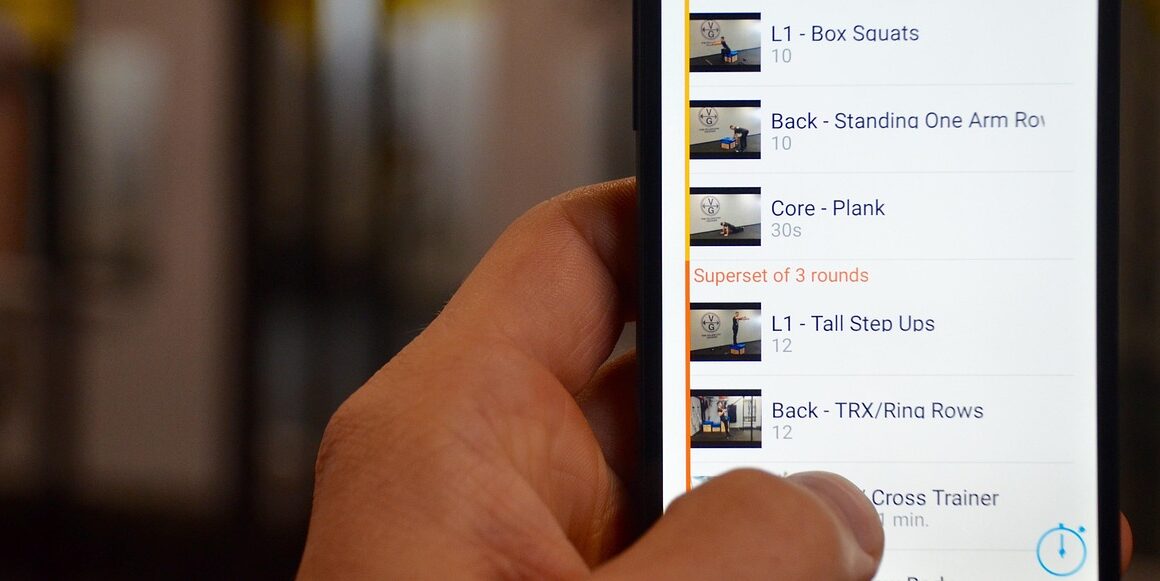Future Trends in Dance Fitness App Development
The dance fitness industry is rapidly evolving, and mobile applications are pivotal in shaping these changes. Advancements in technology are pushing developers into creating apps that not only engage users but also provide personalized experiences. In the near future, expect to see integration of wearable technology with dance fitness apps. Wearables will track users’ movements, offering real-time feedback and suggestions to enhance workouts. This data-driven approach allows for more effective and tailored exercise routines. Moreover, augmented reality (AR) and virtual reality (VR) technologies will transform user engagement significantly. Imagine following an instructor in a virtual dance studio, surrounded by digital elements that create an immersive environment. These innovations can motivate users, making workouts more enjoyable. Social features will also gain importance; users will want community interactions and healthy competition. Apps must foster connection among users, perhaps through leaderboards or virtual group classes, which help build camaraderie and accountability. In addition, the focus on mental wellness will drive dance fitness app development, as mindfulness and physical health intertwine. Thus, expect rave enhancements to make dance fitness apps appealing and effective for all demographics. Obtaining feedback will be crucial for continuous improvement.
As dance fitness continues to flourish, competition among app developers is intensifying. This competition is expected to fuel innovation, prompting developers to explore unique features to attract users. We might witness the introduction of gamification elements, where users earn points, unlock rewards, or progress through levels as they complete dance workouts. Such engaging mechanics can motivate users to participate more frequently. Furthermore, continuous content updates will keep users interested; integrating seasonal themes or challenges can maintain user engagement levels. Personalized playlists based on user preferences will aid in enhancing the user experience. By aligning musical selections with individual tastes, users can enjoy workouts tailored to their liking. Video quality improvements will also be seen, as high-definition streaming becomes a standard expectation. Users want clear visuals and sound to replicate a live class as closely as possible. Furthermore, partnerships with fitness influencers and industry experts can lend credibility to apps, enhancing their appeal. Developers should also consider incorporating feedback from users for ongoing improvements. User-centric design will be crucial for success, with open channels for reviews and suggestions. Ultimately, the combination of compelling content, gamification, and quality interactions will define the future of dance fitness apps.
Focus on Health and Wellness Integration
Health and wellness are paramount in today’s fast-paced society. Dance fitness apps will increasingly incorporate features that promote holistic wellness. For instance, incorporating nutrition tracking and workout suggestions will optimize users’ fitness journeys. Users can benefit from features that sync with their dietary preferences, offering meal suggestions that match their workout routines. Comprehensive wellness perceptions extend beyond mere physical activity, encompassing mental health aspects. Developers can integrate meditation or stretching routines to aid in recovery, emphasizing the importance of balance. In this realm, partnerships with nutrition experts or wellness coaches could provide credible, useful content for users. Additionally, integrating stress management techniques could appeal to users seeking a well-rounded approach to fitness. Users will appreciate professional advice on topics like progress tracking, goal setting, and maintaining motivation. Furthermore, the use of artificial intelligence could streamline personalization, offering tailored suggestions based on user data. This will ensure users receive valuable recommendations that align with their individual fitness needs. Overall, dance fitness apps that prioritize health and wellness integration will likely experience higher user retention rates. As a result, such features will distinguish these platforms among competitors in a crowded market.
The global pandemic has reshaped the landscape of fitness, propelling online classes and at-home workouts into the spotlight. Dance fitness apps have seen increased adoption rates as people seek to stay active at home. As this trend continues, future apps must cater to the needs of both at-home and in-person users. This hybrid model will likely gain traction; apps could provide seamless transition experiences between virtual and physical classes. For example, users could follow a live class while being at home, interacting with both online and offline participants in real-time. Therefore, investing in robust streaming technologies to ensure high-quality performance will become essential. Additionally, developers may focus on community-building by creating platforms where users can share experiences and tips. Virtual dance-offs or challenges can foster engagement and inspire users to achieve fitness milestones. The adaptability of dance fitness apps to varied environments will ultimately dictate their relevance in the evolving market. The versatility of these applications ensures they can cater to different user lifestyles, satisfying both fitness enthusiasts and casual movers alike. Such agility in design and delivery is crucial for maximizing user satisfaction and fostering long-term commitment.
Emphasis on User Experience and Accessibility
User experience (UX) plays a vital role in the success of dance fitness apps. As the market becomes increasingly competitive, delivering a seamless, intuitive experience will be pivotal. Developers must prioritize user journeys, ensuring that navigation is straightforward and engaging to maintain user interest. Accessibility is another key consideration; apps must cater to users with various fitness levels and backgrounds. This could include customizable settings, providing options for beginners, intermediates, and advanced users. Providing clear instructions, video guidance, and multi-language support can further enhance inclusivity, attracting a diverse audience. Furthermore, compatibility with multiple devices, including smartphones, tablets, and smart TVs, will enable users to access content across various platforms effortlessly. Incorporating adaptive features can help accommodate users with disabilities, ensuring everyone has equal opportunities to engage with dance fitness. This may involve voice commands, closed captions, or alternative visual cues for complex choreography. Analytics will also serve as valuable tools for app developers to gauge user satisfaction and identify pain points. Analyzing data insights enables continuous improvements, leading to refined user experiences. Overall, apps prioritizing UX and accessibility will resonate more deeply with consumers and encourage long-term loyalty.
Collaborations with notable dance professionals can significantly enhance the credibility of dance fitness apps. By partnering with experienced instructors and choreographers, developers can offer high-quality, engaging content that captivates users. These partnerships could yield live classes, pre-recorded sessions, or unique choreography styles that appeal to various demographics. Additionally, leveraging fitness influencers on social media can amplify user reach, fostering organic growth and interest. These influencers are trusted by their followers, prompting potential users to explore recommended apps. Incorporating expert insights and recommendations can lend an air of legitimacy to fitness programs too. Cross-promotional strategies can extend the audience base while boosting brand awareness. For instance, collaborating with health and wellness brands for promotional events may captivate users’ attention. Limited-time challenges with enticing rewards, such as discounts or free subscriptions, can further engage potential users. Moreover, hosting dance competitions or showcases can motivate users and bring communities together in a celebratory environment. Thus, networking within the fitness industry will be instrumental as dance fitness apps strive to remain relevant and effective in a crowded marketplace. Continuous adaptation will ensure they thrive amidst changing dynamics.
Conclusion: The Path Forward for Dance Fitness Apps
The future of dance fitness app development hinges on the ability to innovate and respond to user demands effectively. As technology advances, integrating features like wearables, AR, and personalized content will be essential. App developers should remain agile and open to societal shifts, understanding that fitness is evolving beyond mere physical activity. Emphasizing holistic approaches, including health and wellness, can attract users seeking comprehensive solutions. Additionally, prioritizing user experience, accessibility, and community-building will ensure platforms resonate with a vast audience. As competition intensifies, creating a distinctly engaging environment will separate leading apps from others in the market. The incorporation of expert insights and collaborations will enhance user trust, crucial for long-term loyalty. Ultimately, developers must remain attuned to user feedback for continuous enhancements, ensuring sustained engagement and motivation. The trend towards hybrid fitness solutions indicates a significant opportunity for growth. Dance fitness apps poised to succeed will blend these elements harmoniously, catering to diversified user expectations. By embracing these future trends, app developers can contribute positively to the dance fitness landscape, fostering healthy lifestyles and community connections for users worldwide.
Future Trends in Dance Fitness App Development
The dance fitness industry is rapidly evolving, and mobile applications are pivotal in shaping these changes. Advancements in technology are pushing developers into creating apps that not only engage users but also provide personalized experiences. In the near future, expect to see integration of wearable technology with dance fitness apps. Wearables will track users’ movements, offering real-time feedback and suggestions to enhance workouts. This data-driven approach allows for more effective and tailored exercise routines. Moreover, augmented reality (AR) and virtual reality (VR) technologies will transform user engagement significantly. Imagine following an instructor in a virtual dance studio, surrounded by digital elements that create an immersive environment. These innovations can motivate users, making workouts more enjoyable. Social features will also gain importance; users will want community interactions and healthy competition. Apps must foster connection among users, perhaps through leaderboards or virtual group classes, which help build camaraderie and accountability. In addition, the focus on mental wellness will drive dance fitness app development, as mindfulness and physical health intertwine. Thus, expect rave enhancements to make dance fitness apps appealing and effective for all demographics. Obtaining feedback will be crucial for continuous improvement.


